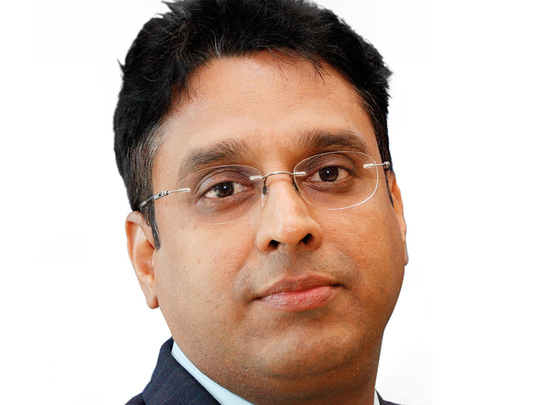
Dubai: Kuwait banks are at an inflexion point, after years of underperformance, relative to their GCC peers and some green shoots are providing positive guidance, according to a recent research by Marmore Mena Intelligence Ltd, a fully owned research subsidiary of Kuwait Financial Centre (Markaz) and credit rating agency Moody’s.
Private sector lending growth in Kuwait is gradually expected to rise over the next few years and reach 4 per cent in 2020 from 2.8 per cent on average in the 2017, supported by Kuwait’s Vision 2035. Development of non-oil industries and improving infrastructure network will be a significant driver of loan demand.
“The economic activity in Kuwait is expected to recover over [the] next two years, with the increase in spending planned in the government’s 2018 budget. In particular, the Kuwaiti banks will benefit from the government’s private-sector stimulus to support private sector growth over the next four years,” said M.R. Raghu, head of Research at Marmore.
Overall loan growth in Kuwait is estimated to have grown at 2.8 per cent in 2017, as compared to 1.2 per cent for the GCC. However, this is far lower than the average annual growth of 5.7 per cent recorded between 2013 and 2016.
Analysts said weak energy prices and lower government spending are putting pressure on lending opportunities.
“While slow economic growth, fiscal and geopolitical risks are expected to pose challenges to credit growth, profitability and loan quality of Kuwait banks, strong capitalisation levels with high loan-loss reserves will provide strong loss-absorption capacity,” said Rajesh Dheenathayalan, manager in the research team at Marmore.
In the past few years, loan demand has remained weak due to delays in funding from government on various capital and development projects. In 2017, the construction sector witnessed a decline in credit growth, particularly during the second half of the year. The credit distribution to the construction sector declined to 5.8 per cent in 2017 as compared to 6.1 per cent in the previous year. Lending to the real estate sector also remained sluggish since 2015.
Corporate banking continues to be an important segment as corporate loans make up nearly half of total loans and approximately 30 per cent of total assets while revenue accounts for nearly a quarter of total revenue for the year 2017. However, in the wake of the oil crisis, retail banking growth has picked up and is now growing faster than corporate banking. Personal loans have consistently grown over the years and account for nearly one-third of total loans by Kuwaiti banks in 2017.
“Rising oil prices will enable governments to move away from austerity towards expansionary policy, which will support consumer and business confidence, which will in turn have a positive impact on credit demand. The higher government spending, coupled with rising interest rates, will support deposit growth, ensuring sufficient growth in banks’ loan books without hampering overall sector stability,” said Raghu.
The surge in oil prices during the second half of 2017 that supported the government revenues, along with the simultaneous efforts of government to limit any liquidity pressure on the banking sector, have slowed down the public sector borrowings in the country. However, government will continue to remain a key source of asset growth for commercial banks as the fiscal balance is unlikely to turn into a surplus at least for the next couple of years.
“The outlook on Kuwait’s banking system is stable — unchanged since 2011 — backed by high capitalisation ratios and loan provisioning coverage coupled with strong liquidity, while profitability is improving,” said Thaddeus Best, an analyst at Moody’s.
Strong liquidity
The current liquidity situation in Kuwait can be termed comfortable due to surging oil prices as compared to the previous two years. If the recovery in oil prices is sustained through 2018, it could boost government oil revenues, reducing pressure on government deposits at banks and lowering governments’ financing needs.
Stabilising oil prices and international sovereign debt issuance will improve funding conditions for banks in the Kuwait over the next 12 months.
Kuwaiti banks are expected to continue exhibiting one of the strongest funding and liquidity profiles in the region, with improved government oil revenues seen supporting deposits from government and corporates.
Higher government revenues will also promote public spending, which will limit the economic slowdown and boost both corporate and retail deposits.
Loan to-deposit ratios have been on an improving trend over the past 12 months, meaning that deployment of funds rather than lack of liquidity, is the new theme in the country. Interbank rates have also increased and money supply is surging over the past two years but both remain way below pre-2014 growth rates.
Low-cost and stable deposits anchor Kuwait bank funding. A lengthy funding squeeze, stemming from low oil prices, eased in 2017 after government injected liquidity from international debt issuances. However, private-sector deposit growth remains low and the relatively growing dependence of Kuwaiti banks on public-sector deposits, which increased from 13 per cent in 2013 to 16 per cent in 2017, will marginally increase vulnerability to deposit volatility. Large Kuwaiti banks with an international footprint are expected to raise funds at a global market level.











